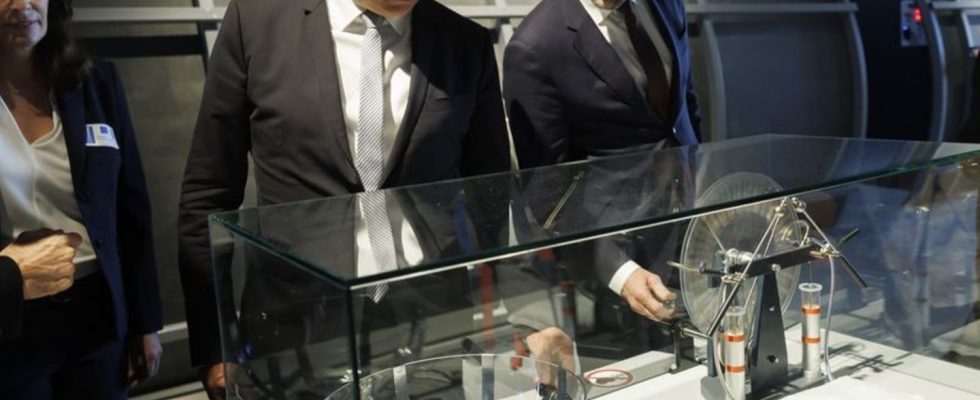CERN
Like a floating spaceship: “Gateway to Science” in Geneva
Swiss Federal President Alain Berset (2nd from right) and Antonio Hodgers, President of the Geneva State Council, test the Science Gateway in Meyrin near Geneva. photo
© Salvatore Di Nolfi/KEYSTONE/dpa
The European Organization for Nuclear Research offers a new meeting place. There is a lot on offer for science fans.
The European Organization for Nuclear Research offers hands-on science (Cern) in a spectacular new building at their headquarters in Geneva, Switzerland. Science is the key to a sustainable future, said Italian physicist and CERN Director General Fabiola Gianotti at the opening.
The Science Gateway meeting place is intended to awaken curiosity and promote critical thinking. In the future, Cern will be able to receive up to half a million visitors a year instead of 125,000.
This is what it looks like
The building consists of oversized walk-in tubes that are connected to a glass bridge over a street. The tubes are reminiscent of the largest research machine in the world, which is located in the same place a hundred meters underground: the 27 kilometer long ring-shaped particle accelerator with which Cern explores the universe.
“The building is like a spaceship about to land,” said the Italian architect Renzo Piano (86). Solar panels provided one hundred percent of the energy. A grove of 400 trees and 13,000 bushes was planted around the building.
This is what you can see
The particle accelerator simulates the time shortly after the Big Bang – the birth of the universe almost 14 billion years ago. Researchers are looking for the fundamental laws of the universe. To do this, proton beams are brought into collision at practically the speed of light in order to observe decay processes.
Materials and processes developed at CERN for experiments benefit the world. These include particularly powerful solar panels, touch screen technology and imaging procedures such as magnetic resonance imaging (MRI). The World Wide Web was also invented there.
With cleverly installed dummies and visual effects, the enormous dimensions of the particle accelerator can be seen in the 8,000 square meter Science Gateway. Visitors can get hands-on in numerous places, for example to explore the properties of magnets. The Gateway also offers workshops for children aged five and over, who can, for example, direct miniature robots with color codes over lines.

